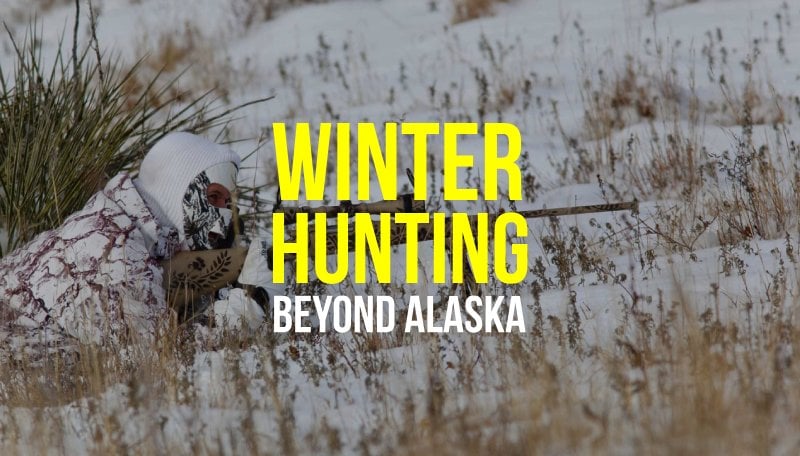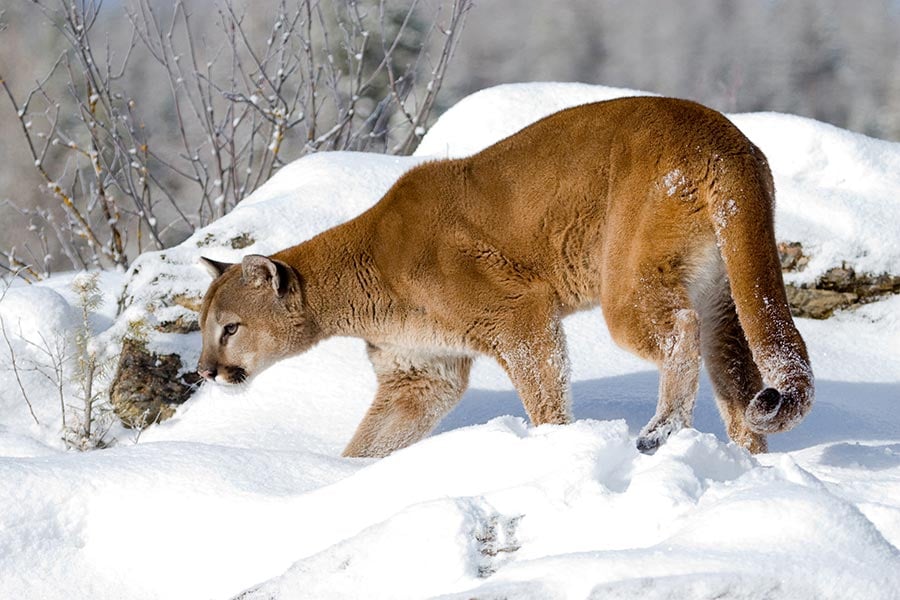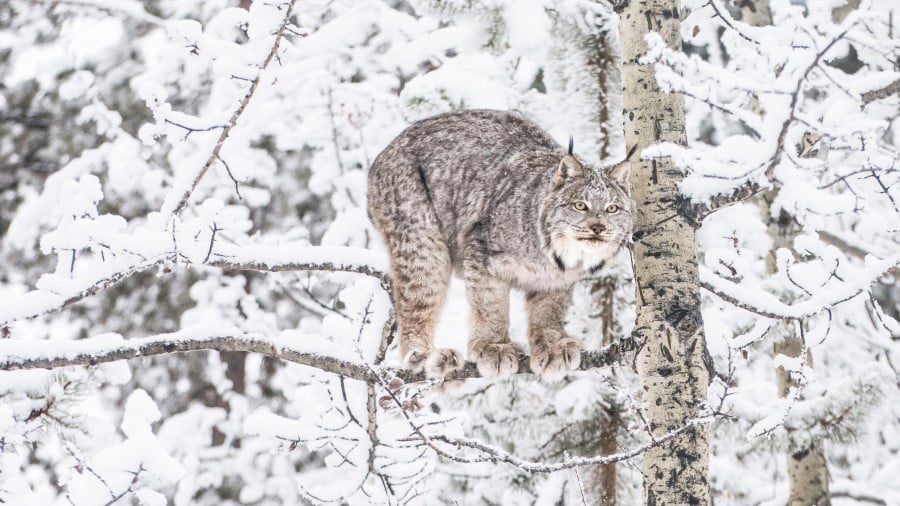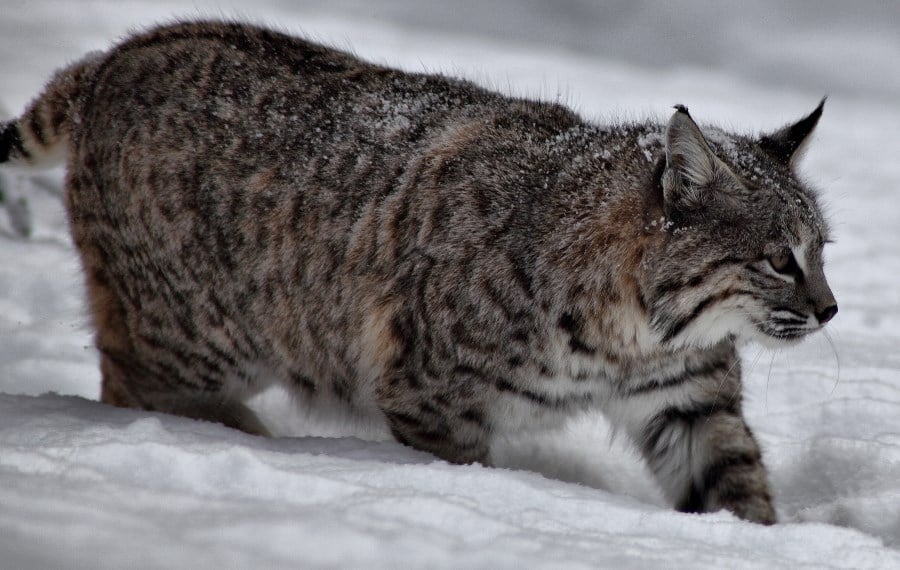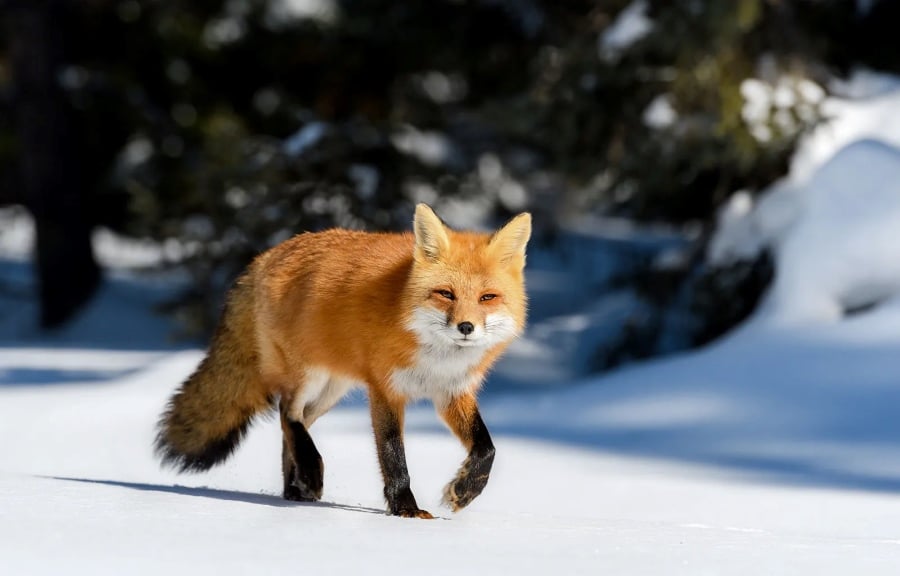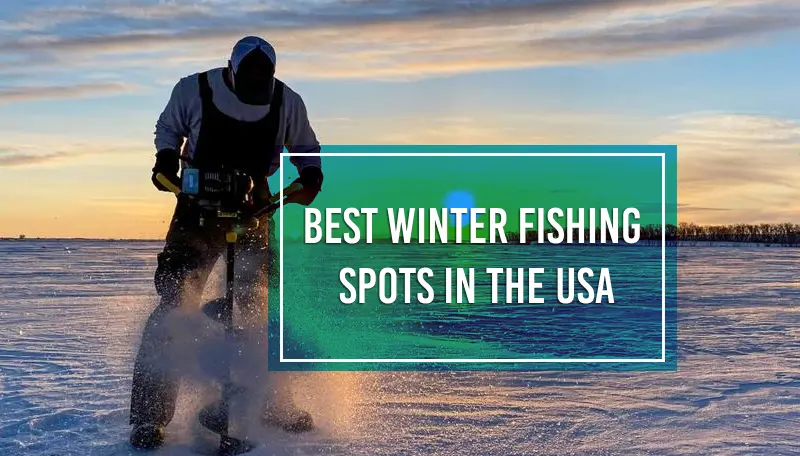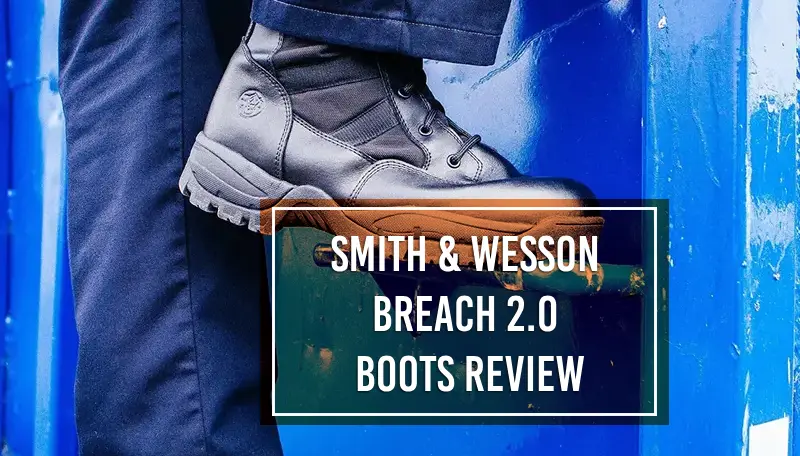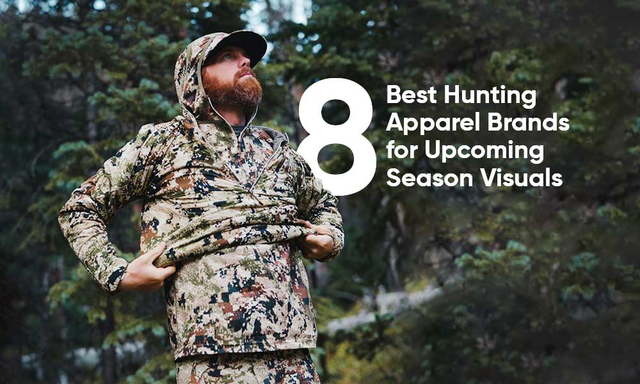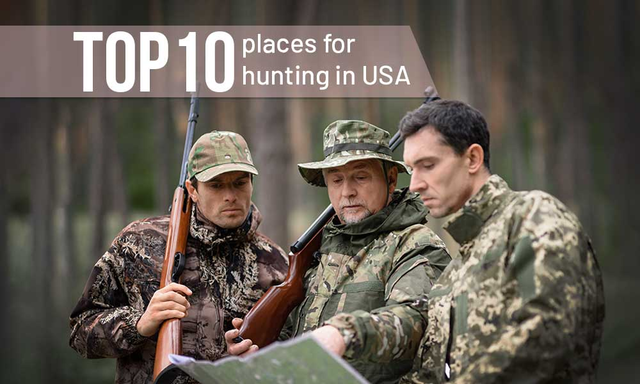Last Updated on
As winter blankets the landscape in a pristine layer of snow, the hunting seasons for ungulates such as deer, elk, and moose typically draw to a close. However, this does not mean the end of hunting opportunities. In fact, the onset of winter marks the beginning of a different kind of hunting adventure. From small game to predators, numerous species become the focus of winter hunts. Let’s explore the exciting world of winter hunting and discover the best places for cold-weather hunting.
Best Winter Hunting Destinations:
Montana for Cougar
North Dakota for Bison
British Columbia for Lynx
Maine for Hare & Bobcat
Pennsylvania for Fox
Montana Winter Hunting: Mountain Lion
Montana is one of the diamonds of the US and stands out for its rich wildlife and expansive hunting areas. While it doesn’t have the largest deer population compared to other states – about 450,000 – it’s enough for a good hunt. You can find mule deer everywhere in Montana, and whitetails are more common in the western mountains and around river drainages in eastern Montana. Beyond deer, Montana is teeming with a variety of big game and bird species that attract hunters from near and far.
But when it comes to winter hunting, the mountain lion steals the spotlight. The opening of the mountain lion season runs from December through mid-April.
Mountain lions are hard to find, so hiring a professional guide can help you have a successful hunt. A full week of hunting in Montana, with everything included, can cost over $5000. It might sound expensive, but the experience of tracking and hunting a mountain lion in Montana’s snowy landscapes is an unforgettable adventure.
One thing that makes Montana special is its low number of people and huge open spaces. This means peaceful hunting areas where you can enjoy the sounds of nature. Also, if you’re not a fan of hunting on private land, about 30% of Montana is public land, giving hunters lots of space to explore. So, when considering your next winter hunting destination, Montana should undoubtedly be on your list.
North Dakota Winter Hunting: Bison
One of the key attractions of hunting in North Dakota is, of course, duck hunting – the state isn’t called the Duck Factory for no reason. Whitetails and muleys aren’t far behind. But what sets the state apart is its prime bison hunting in winter.
Two hundred years ago, the Great Plains were full of bison. There used to be around 40 million of them, but by 1890 they were almost extinct because people hunted them for their skins. Today, there are fewer bison, but thanks to conservation efforts, they still live on the plains and can be hunted.
Private ranches in North Dakota offer exciting bison hunts. Whether you want an adventure in the wild or a hunt on a ranch, hunting bison has something for everyone.
One great thing about hunting bison in North Dakota is that you don’t need a special license or hunting education, so it’s easy to get started. While there isn’t a specific hunting season, most bison hunts happen from September to March. If you want the best skins, the best time to hunt is from November to March, when the bison have their thickest winter fur.
North Dakota is also a good place for bird hunting and predator hunting. You can hunt ring-necked pheasant, Hungarian partridge, and some types of grouse until early January. Coyote hunting season is open all year round.
Also, there are over 1 million acres of public land for hunting in North Dakota. Also, unless there are signs or laws saying otherwise, you can hunt on private land too.
British Columbia Winter Hunting: Canada Predators
British Columbia is a fantastic place for winter hunting. In general, it has a lot of different animals, giving hunters the chance to hunt 18 out of 30 big game species. Plus, many of the biggest, record-breaking game trophies, including moose, black bear, mule deer, and cougar, have come from here.
Even though Canada has strict gun laws, you can still go on guided combo hunts in British Columbia. If you consider winter hunting in BC, you’ll find lots of options for hunting predators like wolves, cougars, lynxes, bobcats, and coyotes. Depending on where you stay and what kind of hunting package you choose, you can use a rifle, muzzleloader, or bow and try different hunting methods, from stalking wolves to hunting cougars with dogs.
British Columbia is also a good place for bird hunting. You can hunt ducks, geese, coots, and common snipe until the end of January. So, whether you’re looking for a peaceful winter hunt or a thrilling chase, British Columbia offers a hunting experience you’ll never forget and will find rewarding.
Maine Winter Hunting: Hare & Bobcat
With its diverse ecosystems, Maine stands out as a prime winter hunting destination in North America. Its big forests, peaceful lakes, and winding rivers are home to lots of wildlife species from elegant deer and big bears to majestic moose and lots of bird species, drawing hunters from near and far. The state’s thriving moose population, in particular, makes it a hotspot for big game hunters
In the winter, you can hunt snowshoe hare in Maine until February or March, depending on where you are. This gives hunters plenty of time to track and hunt these animals in Maine’s snowy landscapes.
Hunting predators is also popular in Maine, with bobcat and fox seasons open through late February. There is no bag limit for these predators. Cold weather often brings bobcats and foxes closer to human settlements, making them easier game. As for bobcats, remember, you might not find many of these animals in northwest Maine. You’ll probably have better luck hunting in other parts of the state.
Pennsylvania Winter Hunting: Fox
Pennsylvania stands tall as one of the premier hunting locations in North America. The state is famous for its big whitetail deer population, estimated at nearly 1.5 million, making it a magnet for deer hunters across the continent.
As for cold weather hunting, one particular highlight of Pennsylvania is its thriving fox population. Each year, hunters and trappers account for approximately 30,000 red foxes and 20,000 gray foxes. Indeed, spotting foxes in Pennsylvania is quite common. These agile animals have adapted well to suburban environments, inhabiting all 67 counties.
The state’s fox season extends from September through February. Hunting these primarily nocturnal creatures can be quite a challenge, but while many hunters opt for trapping, stalking a fox can be equally rewarding.
Remember that winter squirrel hunting (red, gray, and black) in Pennsylvania takes during the same month as fox hunting.
So, if you’re set on braving the winter chill for a hunting adventure, remember that the right winter hunting clothing and gear are crucial. Make sure to explore GRITR Outdoors, your one-stop shop for all your high-quality outdoor gear.
Read other posts:
A Hunter’s Guide to Russia: Discover the Top Hunting Destinations
Top Grounds for Hunting in Europe: From Spain to Romania
FAQs
Is winter a good time for hunting?
Winter is a great time for hunting because animals are often more visible against the snow, and their tracks are easier to follow. Also, some animals have mating seasons during the winter, making them more active and easier to locate.
What types of animals can be hunted in the winter?
The types of animals you can hunt in the winter vary by region and local regulations, but they often include predators, like cougar, coyote, fox wolf, and bobcat, as well as hares, rabbits, and various bird species.
What equipment is needed for winter hunting?
In addition to standard hunting gear (like firearms or bows and arrows), winter hunting requires warm clothing, waterproof boots, gloves, and potentially snowshoes or skis. It’s also a good idea to have a thermos with hot drinks and high-energy food.
What are some tips for successful winter hunting?
Successful winter hunting often involves careful planning, understanding animal behavior, using appropriate gear, and being patient. It’s also important to respect local regulations and only hunt in designated areas. Guided hunts are an option for easier predator hunting.
